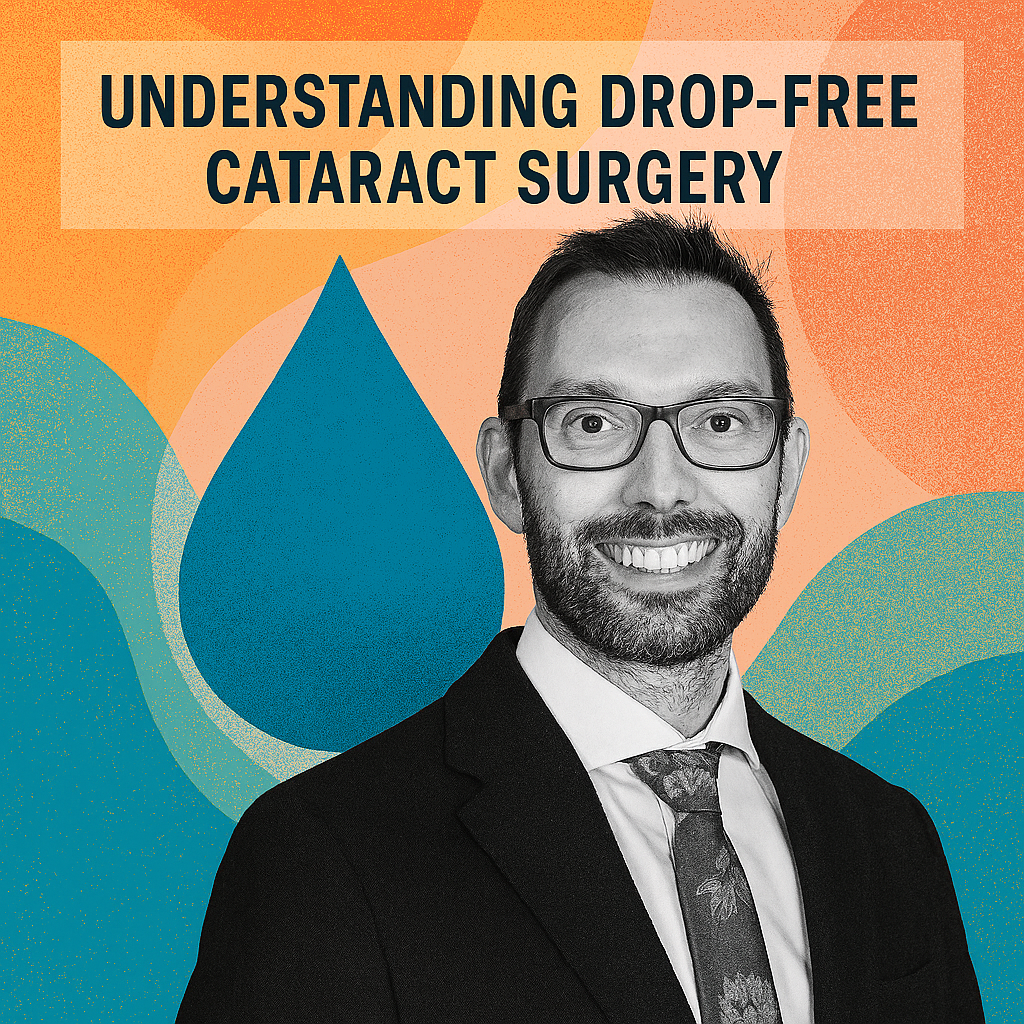Understanding drop-free cataract surgery: benefits, risks, and clinical considerations
Richard Stead, consultant ophthalmologist and Newmedica glaucoma lead, offers his insights for optometrists
- Drop-free cataract surgery swaps daily eye drops for a single steroid injection.
- Decisions should be tailored to each patient and ability to manage drops - just like at Newmedica and across NHS trusts.
- Careful assessment is key: 5–10% may see higher eye pressure after steroids.
- Patients should receive clear information about glaucoma risk. More evidence is needed before general use.
Over the years, the way we manage patients before and after surgery has evolved – with drop-free cataract surgery being one example.
In this post, I’ll share my perspective as a consultant ophthalmologist who started out as an optometrist, reflecting on how this approach is shaping patient care and what considerations clinicians and patients should bear in mind.
What is drop-free cataract surgery?

Patients undergoing cataract surgery are normally prescribed steroid and antibiotic eye drops to use afterwards - sometimes combined into a single drop. These drops are crucial to reduce inflammation and prevent infection. However, some patients may struggle with administering drops, experience adverse reactions to the medication or preservatives, with compliance becoming an issue.
Over time, evidence has shifted our practice. We now know that routine antibiotic drops are unnecessary, as an antibiotic injection is administered during surgery.
The focus of drop-free surgery is on managing inflammation. Instead of prescribing steroid drops, a depot steroid injection is administered - most commonly triamcinolone in the UK - under the conjunctiva at the end of surgery. This method can provide sustained anti-inflammatory effects without the need for daily drops.
Who benefits most?
Drop-free cataract surgery can be beneficial for those who may have difficulties using drops post-operatively. This may include patients with learning disabilities, those undergoing surgery under general anaesthesia who cannot instil drops, individuals with dementia or particular challenges with adhering to a drop regimen. Typically, the decision to offer a steroid injection is made on a case-by-case basis, after assessing the patient’s ability to manage drops and consulting with them about the available options. Both in Newmedica and across NHS trusts, the approach is tailored to each patient’s needs.
Potential pitfalls and risks
While the convenience of depot steroid injections is clear, they are not without risk. A primary concern is the potential for raised intraocular pressure and glaucoma - a particular problem for those predisposed to these conditions.
Around 5 to 10 per cent of people given steroids will experience a rise in eye pressure. With eye drops, this is relatively easy to manage, as stopping the drops usually resolves the issue. However, a depot injection cannot be reversed easily; the only option is to attempt to wash out the steroid, and this is not always effective.
The spike in eye pressure typically occurs between one and four weeks after surgery but can happen later. Evidence suggests that if we’re going to give steroids, we probably need to monitor more closely to pick up a pressure spike that the patient wouldn’t realise is there.
Glaucoma is the hidden danger. Given that as many as 10% of the population could be steroid responders and very rarely know, there needs to be a considered approach before using drop-free surgery widely.
 Balancing risks and benefits
Balancing risks and benefits
Like any surgical intervention, drop-free cataract surgery should be based on careful weighing of risks and benefits. Patients with existing glaucoma, a family history of the condition, or those who are myopic may be at higher risk of a steroid-induced pressure response and a need for closer monitoring.
Unfortunately, there is still a lack of robust evidence to guide best practice regarding who should receive additional monitoring. Most of the available studies are retrospective, and more high-quality, methodologically sound trials are needed before blanket use.
Medicine is full or examples of early enthusiasm for new approaches later tempered by better research. High-dose steroids for traumatic optic neuropathy or traumatic spinal injuries, for instance, were advocated, only to be abandoned when further studies revealed increased risks.
Advice for optometrists and eye care professionals
My advice to colleagues in optometry and other eye health professionals is to be aware of the risks and benefits. Inform patients of those. We can perform drop-free cataract surgery if it’s appropriate, but they may need closer monitoring. They need to be warned about the risk of glaucoma. It will be appropriate for some - maybe the majority - but we need more evidence before offering it to everyone.
At Newmedica, we also run glaucoma clinics, so monitoring is part of our approach. Treatment is always based on the individual patient. If it’s appropriate, we’ll do it, but it might not be for all. We just don’t know yet - we need the evidence first.
Final thoughts
Ultimately, successful cataract surgery is about thoughtful, personalised care. For some - such as those with Parkinson’s or significant dexterity issues - drop-free surgery can make a real difference. If you are referring patients who may benefit, make this known in your referrals so consultants can weigh up the risks and benefits. Most importantly, always ensure patients are offered choice and informed guidance, taking into account location, waiting times, clinical outcomes, and the type of intraocular lens.
We must continue to evaluate new evidence as it emerges, ensuring that advances in our practice always serve our patients’ best interests.
